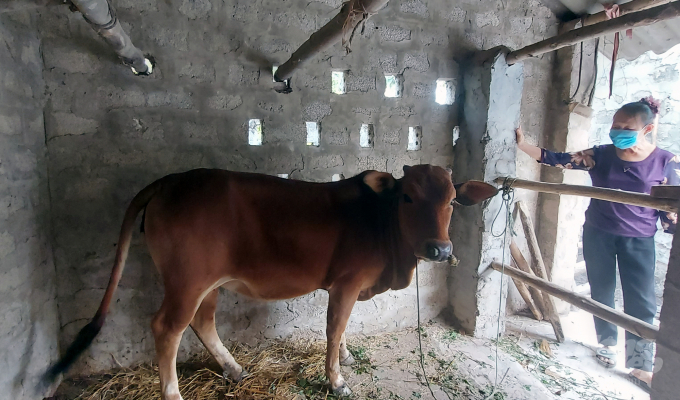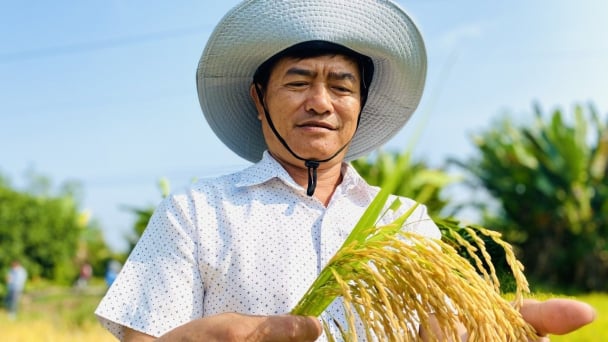May 31, 2025 | 00:35 GMT +7
May 31, 2025 | 00:35 GMT +7
Hotline: 0913.378.918
May 31, 2025 | 00:35 GMT +7
Hotline: 0913.378.918
The move came after the report of the Ministry of Agriculture and Rural Development showed that the first time that Lumpy skin disease on cows and buffaloes appeared in Viet Nam was October 2020.
As of May 10, there have been 1,660 outbreaks reportedly occurred in 1,622 communes of 29 provinces and cities nation-wide.
It has caused a total of 44,700 cows and buffaloes contracting the disease and killed over 5,100 others.
It is forecasted that in the coming time, Lumpy skin disease will continue to spread on a large scale, especially when weather conditions have changed and the season that flies, mosquitoes grow is coming.
Therefore, to minimise damage to farmers, Chinh required head of People’s Committee of cities and provinces to take cohesive measures to prevent Lumpy skin disease on cows and buffaloes in accordance with the provisions of the law on veterinary medicine and the guidance of the ministry.
The head of the People’s Committee of provinces and cities also had to take full responsibility for the prevention and control of Lumpy skin disease in the localities, he said.
The disease-hit localities were told to declare the disease according to regulations; concentrate resources and synchronously apply solutions to control and definitively handle outbreaks under regulations, preventing the disease from spreading for a long time, he said.

A female cow, suffering from Lumpy skin disease, has been treated and recovered gradually in Nghi Son Town, Thanh Hoa Province. Photo: Vo Dung.
The localities were ordered to vaccinate cows and buffaloes, supervise, early detect and timely handle new-arising outbreaks to prevent the disease from spreading, he added.
They also had to instruct buffalo-and-cow breeders to increase the application of proactive measures to prevent the disease, he said.
Besides, authorised agencies were tasked to spray disinfectants to prevent flies, mosquitoes and gnats that could transmit the disease to cows and buffaloes in the localities, he said.
The localities were also required to make detailed plans and allocated funds to prevent and control the disease as regulations, he said.
Other tasks included supervising closely the gathering and trading of cows and buffaloes as well as products from cows and buffaloes; strengthening inspection of hygiene and food safety especially in slaughterhouse and facilities of processing products of cows and buffaloes; as well as disseminating local people to actively take measures to prevent and control the disease, he said.
Chinh also assigned the agricultural ministry to work with relevant agencies to allocate funds to actively monitor the disease situation, ensure early detection, warn and thoroughly handle the outbreak.
The ministry had to direct and instruct the import of vaccines to prevent the disease as well as urgently finish the testing and approval of vaccine circulation following regulations, he said.
The ministry was told to work with the Ministry of Science and Technology and relevant units to research on the epidemiology of the Lumpy skin disease and measures to effectively prevent the disease.
The ministry was also tasked to conduct research to produce domestic vaccines to prevent the disease, he added.
Additionally, the ministry should coordinate with the Ministry of Finance to issue mechanisms to support breeders and localities in preventing and controlling the disease as regulations.
It was required to actively coordinate with international organisations and foreign countries in sharing and supporting Viet Nam in the prevention and control of the disease.
The Ministry of Information and Communications was told to direct central and local press agencies to promptly provide information on the disease situation and promote dissemination on measures to prevent and control the disease to breeders so that they did not panic and actively apply measures to prevent the disease under the guidance of specialised agencies.
Chinh also ordered the National Steering Committee 389 to direct the coordination between agencies and functional forces to promptly prevent smuggling and illegal transportation of buffaloes and cows and products from buffaloes and cows from foreign countries to Viet Nam.
Lumpy skin disease (LSD) is a devastating disease of cattle and buffalo caused by a capripox virus. It is believed that arthropod vectors, direct contact, contaminated feed and water and iatrogenic means (for example, repeated use of needles on different animals) can all spread the disease.
The virus is present in high concentrations in the skin nodules and scabs on affected animals and can be isolated from blood, saliva, ocular and nasal discharges and semen.
Lumpy skin disease virus can be found in blood for up to 21 days post-infection but shedding in semen may continue for at least 42 days post-infection.
Translated by Thu Hang
/2025/05/29/5625-12-214801_567.jpg)
(VAN) Provincial mergers in the Mekong Delta promise to streamline administration, expand inter-provincial raw material areas, and foster close linkages in agricultural value chains, benefiting both businesses and cooperatives.

(VAN) Merging Mekong Delta provinces contributes to the expansion of agricultural raw material areas, addressing previous constraints caused by provincial boundaries. Additionally, this expansion will reduce costs and strengthen linkages between businesses, cooperatives, and farmers.
/2025/05/29/1043-2-153730_145.jpg)
(VAN) The Government's policy to merge provincial-level administrative units opens up major opportunities for the Mekong Delta region to reshape its agricultural development strategy toward large-scale production, effective regional linkages, and sustainability.

(VAN) The mutual export of agrifood products between the European Union (EU) and the United Kingdom (UK) must occur again without certification, border controls or other red tape. This was agreed at the UK-EU summit.
/2025/05/22/5121-2-173645_677.jpg)
(VAN) NBSAP Tracker identifies strengths and areas for improvement in the National Biodiversity Strategy, based on each region’s priorities and capacities.

(VAN) The draft amendment to the Circular on rice export trading stipulates a periodic reporting regime for rice exporting enterprises.

(VAN) Dong Thap farmers attained an average profit margin of 64% during the summer-autumn 2024 crop (first season), while An Giang and Kien Giang farmers followed with 56% and 54%, respectively.